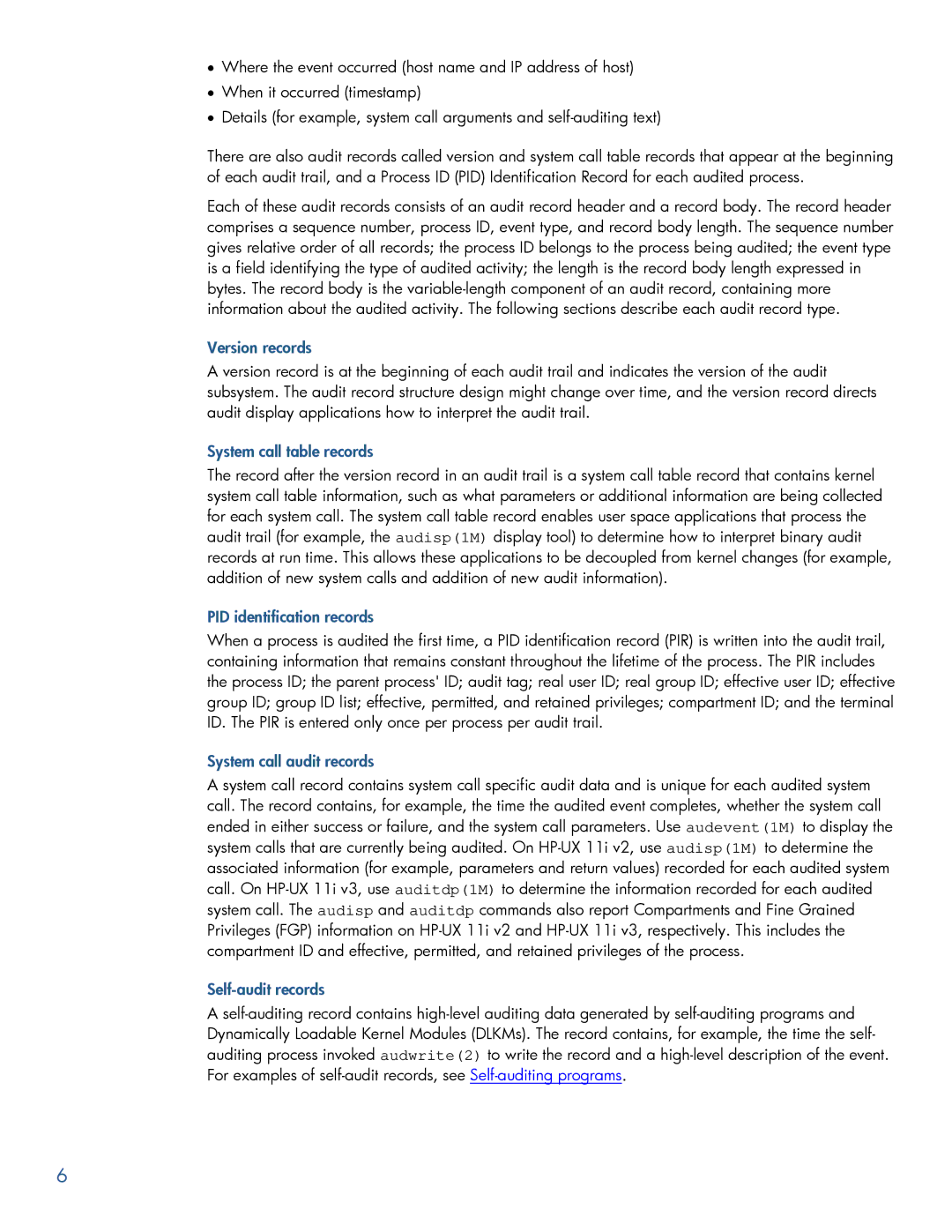•Where the event occurred (host name and IP address of host)
•When it occurred (timestamp)
•Details (for example, system call arguments and
There are also audit records called version and system call table records that appear at the beginning of each audit trail, and a Process ID (PID) Identification Record for each audited process.
Each of these audit records consists of an audit record header and a record body. The record header comprises a sequence number, process ID, event type, and record body length. The sequence number gives relative order of all records; the process ID belongs to the process being audited; the event type is a field identifying the type of audited activity; the length is the record body length expressed in bytes. The record body is the
Version records
A version record is at the beginning of each audit trail and indicates the version of the audit subsystem. The audit record structure design might change over time, and the version record directs audit display applications how to interpret the audit trail.
System call table records
The record after the version record in an audit trail is a system call table record that contains kernel system call table information, such as what parameters or additional information are being collected for each system call. The system call table record enables user space applications that process the audit trail (for example, the audisp(1M) display tool) to determine how to interpret binary audit records at run time. This allows these applications to be decoupled from kernel changes (for example, addition of new system calls and addition of new audit information).
PID identification records
When a process is audited the first time, a PID identification record (PIR) is written into the audit trail, containing information that remains constant throughout the lifetime of the process. The PIR includes the process ID; the parent process' ID; audit tag; real user ID; real group ID; effective user ID; effective group ID; group ID list; effective, permitted, and retained privileges; compartment ID; and the terminal ID. The PIR is entered only once per process per audit trail.
System call audit records
A system call record contains system call specific audit data and is unique for each audited system call. The record contains, for example, the time the audited event completes, whether the system call ended in either success or failure, and the system call parameters. Use audevent(1M) to display the system calls that are currently being audited. On
Self-audit records
A
6
